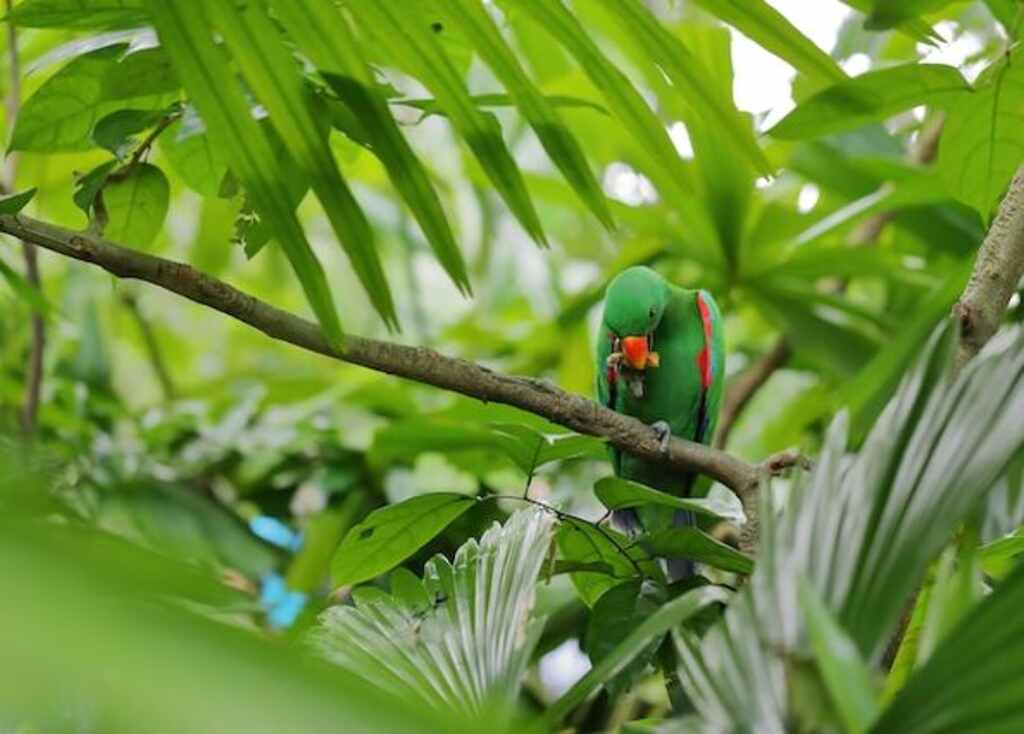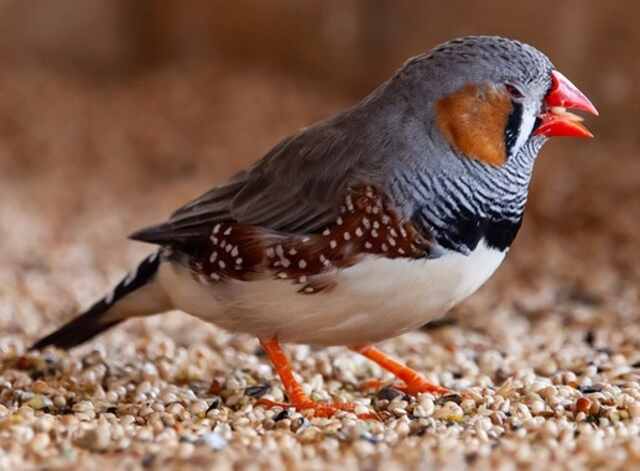Tropical birds are known for their vibrant colors and melodious songs, but did you know that their diets are equally diverse? From fruits and seeds to insects and nectar, tropical birds consume a wide variety of foods to meet their nutritional needs.
Table of Contents
- 1 Key Takeaways:
- 2 What Do Tropical Birds Eat?
- 3 Types of Food Consumed by Tropical Birds
- 4 Fruits in the Tropical Bird Diet
- 5 Seeds and Nuts in the Tropical Bird Diet
- 6 Insects and Invertebrates in the Tropical Bird Diet
- 7 Nectar and Pollen in the Tropical Bird Diet
- 8 Foraging Habits of Tropical Birds
- 9 Factors Influencing Tropical Bird Diet
- 10 Captive Diets for Tropical Birds
- 11 Unique Dietary Adaptations of Certain Tropical Bird Species
- 12 Conservation Importance of Understanding Tropical Bird Diets
- 13 Conclusion
- 14 FAQs: What Do Tropical Birds Eat?
- 14.1 What do tropical birds eat?
- 14.2 What types of food do tropical birds rely on in their natural habitats?
- 14.3 Why are fruits important in the diet of tropical birds?
- 14.4 How do tropical birds consume seeds and nuts?
- 14.5 What is the role of insects and invertebrates in the tropical bird diet?
- 14.6 Why do tropical birds consume nectar and pollen?
- 14.7 How do tropical birds locate their food sources?
- 14.8 What factors influence the diet of tropical birds?
- 14.9 What should the diet be for tropical birds kept in captivity?
- 14.10 Can you provide examples of tropical bird species with unique dietary adaptations?
- 14.11 Why is understanding tropical bird diets important for conservation efforts?
- 15 Author
Key Takeaways:
- Tropical birds have diverse diets that include fruits, seeds, insects, and nectar.
- Their food preferences are influenced by factors such as availability and seasonality.
- Understanding their diets is essential for conserving their natural habitats.
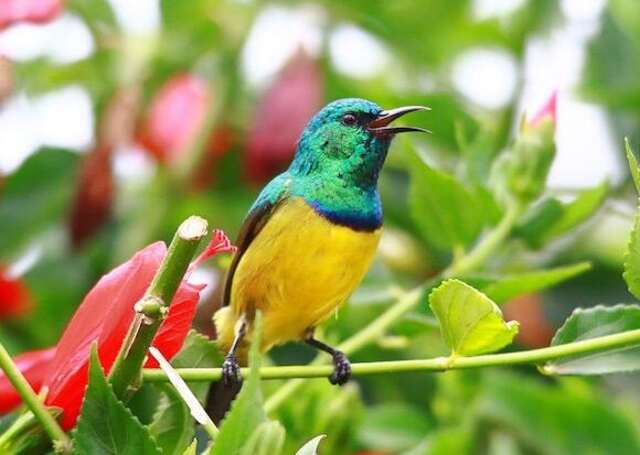
What Do Tropical Birds Eat?
Tropical birds primarily eat a diverse diet of fruits, nectar, insects, and seeds. Their food sources vary based on species and habitat. Fruits provide energy, nectar offers sugars, insects offer protein, and seeds are a staple. This balanced diet supports their vibrant colors and active lifestyles.
Types of Food Consumed by Tropical Birds
Tropical birds have a diverse diet that includes a variety of food sources from their natural habitats. The types of foods they consume vary depending on the species of bird and their location. Here are some of the most common food sources for tropical birds:
| Food Source | Description |
|---|---|
| Fruits | Tropical birds consume a wide variety of fruits, including berries, figs, and bananas. They use their strong beaks to break open the tough skins and access the flesh and juice inside. |
| Seeds and Nuts | Many tropical birds rely on seeds and nuts for their diet, including sunflower seeds, acorns, and pine nuts. Some species have specially adapted beaks that allow them to crack open hard shells or extract seeds from cones and other fruits. |
Tropical birds also consume insects and invertebrates, such as ants, beetles, and spiders. These provide a valuable source of protein for the birds, and they have evolved specialized hunting techniques to catch them.
Finally, some tropical birds consume nectar and pollen, primarily hummingbirds, sunbirds, and honeyeaters, which are attracted to flowers and play an important role in pollination.
Fruits in the Tropical Bird Diet
Fruits are an important food source for many tropical bird species. Not only are they a valuable source of carbohydrates, but they also provide essential vitamins and minerals. Tropical birds consume a wide variety of fruits, ranging from small berries to large, fleshy fruits like papayas and mangoes. Some of the most commonly consumed fruits by tropical birds include guavas, figs, and bananas.
However, obtaining fruits can be challenging for some tropical bird species, as many fruits are located high in the canopy or are protected by tough outer layers that must be peeled or cracked open. Some birds, such as toucans and hornbills, have evolved specialized beaks that aid in fruit consumption, while others may rely on cooperative feeding behaviors.
In addition to foraging for fruits in their natural habitats, many tropical birds also rely on fruiting trees and shrubs that are cultivated by humans. Some of these trees include guava, mango, and papaya, which are grown specifically for their fruit. These cultivated fruit trees can play a significant role in the conservation of tropical bird species by providing a reliable food source throughout the year.
How do tropical birds obtain fruit?
Tropical birds use a variety of methods to obtain fruit. Some species, such as parrots, macaws, and some toucan species, have strong beaks that can crack open tough fruit skins. Other species, such as thrushes and tanagers, have slender bills that enable them to pluck small fruits and berries from trees and shrubs.
Some birds, such as the hornbills of Africa and Asia, have large bills with serrated edges that are used to chop open fruit. Other species, like some manakins and euphonias, have specialized tongues that aid in fruit consumption.
For some tropical bird species, feeding on fruit is a social activity that involves cooperative feeding behaviors. For example, some species of tanagers and thrushes will form flocks during the non-breeding season to feed on fruiting trees and shrubs.
This behavior not only helps the birds locate food sources more efficiently, but it also provides safety in numbers, as larger groups can more effectively fend off predators.
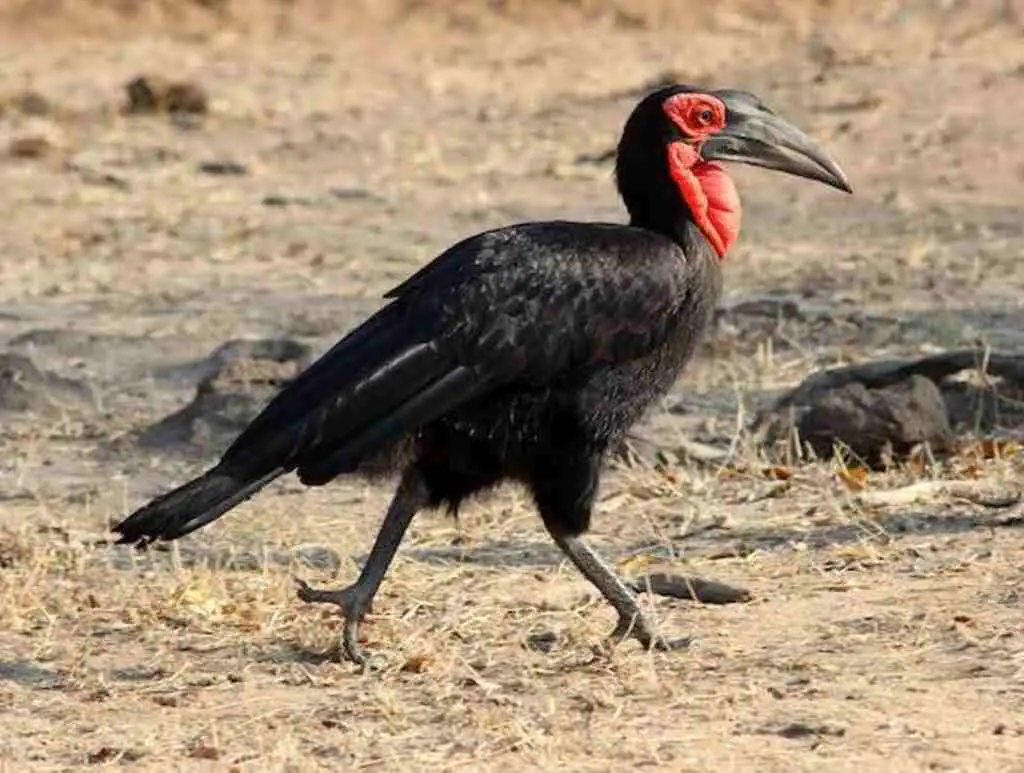
Seeds and Nuts in the Tropical Bird Diet
Tropical birds rely heavily on seeds and nuts as a significant source of nutrition. These food sources are rich in protein, fiber, and fats, which help to provide the necessary energy for these birds to fly long distances and maintain their body temperature.
Seeds and nuts vary in their nutritional composition depending on the species of plant from which they come. Some tropical bird species prefer to eat seeds that have a hard shell that they can crack open with their powerful beaks, such as macaws and parrots. Others, such as finches, prefer softer seeds that they can easily hull.
| Tropical Bird Species | Types of Seeds and Nuts Eaten |
|---|---|
| Macaws | Almonds, Brazil nuts, and palm nuts |
| Finches | Millet, canary seed, and sunflower seeds |
| Parrots | Sunflower seeds, pumpkins seeds, and peanuts |
Tropical birds are also known to store seeds and nuts in different locations to help ensure a steady food supply. Some birds will bury their food in the ground for later retrieval, while others will hide it in tree crevices or under bark.
Overall, seeds and nuts are a vital component of the tropical bird diet, providing essential nutrients that help these birds survive in their natural habitats.
Insects and Invertebrates in the Tropical Bird Diet
Insects and invertebrates play a critical role in the diet of many tropical bird species. Insects such as ants, termites, and beetles provide a vital source of protein for birds, especially during periods of nesting and breeding.
Tropical birds use a variety of techniques to capture insects, including aerial hunting, ground foraging, and probing. Species such as flycatchers and swallows are known for their aerial acrobatics, swooping through the air to catch flying insects. Other birds, such as thrushes and wrens, forage on the ground, flipping over leaves and debris to uncover hidden insects.
Some species of tropical birds have even developed specialized hunting techniques for capturing particular types of insects. For example, the woodpecker finch of the Galápagos Islands uses cactus thorns to extract insect larvae from tree bark, while the honeycreeper has a long, curved bill adapted for probing into flowers to extract nectar and insects.
In addition to insects, many tropical birds also consume other invertebrates such as spiders and snails. These creatures provide an important source of calcium and other nutrients that are crucial for healthy bone and eggshell development.
However, the availability of insects and other invertebrates can be highly variable in tropical environments, with many species experiencing seasonal fluctuations in prey abundance. This can have significant impacts on bird populations, particularly during periods of reproduction when a reliable food source is essential.
Despite these challenges, many tropical bird species have evolved to be adaptable and resilient in the face of changing food resources. By understanding the role of insects and invertebrates in the diet of tropical birds, researchers and conservationists can better protect these critical food sources and help ensure the long-term survival of these unique and remarkable birds.
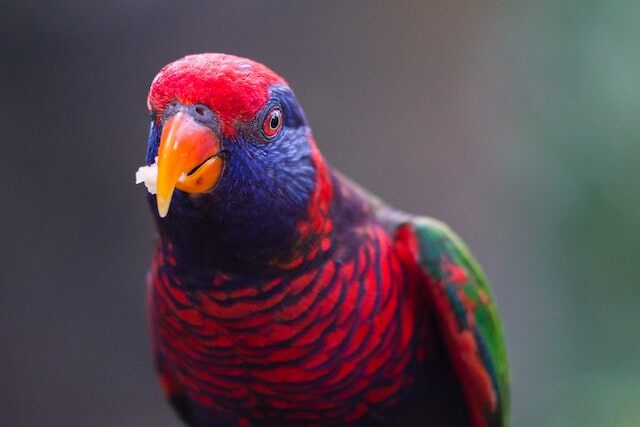
Nectar and Pollen in the Tropical Bird Diet
In addition to fruits, seeds, and insects, nectar and pollen are an important part of the diet for many tropical birds.
Nectar is a sugary liquid found in flowers, which is produced to attract pollinators like birds and insects. Tropical birds with curved beaks, such as hummingbirds and honeycreepers, are particularly adept at feeding on nectar. These birds use their long, thin beaks to reach deep into the flower to sip the nectar.
Some tropical birds also consume pollen, which is a powdery substance produced by flowers that contains the male reproductive cells. Pollen is an important source of protein and nutrients for some bird species.
Tropical birds play an essential role in pollination, which is the process of transferring pollen from the male reproductive organs to the female reproductive organs in plants. As birds feed on nectar, pollen sticks to their feathers and beaks. When they move from one flower to another, they transfer the pollen, which allows the plants to produce seeds and reproduce.
Some tropical bird species, such as sunbirds and honeyeaters, have specialized brush-tipped tongues that allow them to gather nectar more efficiently. They may also feed on insects that visit the flowers, which provides an additional protein source.
Understanding the role of nectar and pollen in the tropical bird diet is crucial for conservation efforts. Preserving the natural habitats of these birds and the flowers they rely on for food is necessary to maintain their populations and the ecosystem as a whole.
Foraging Habits of Tropical Birds
Tropical birds have evolved various foraging habits to adapt to their unique habitats and food sources. These techniques can be broadly classified into three categories: gleaners, frugivores, and nectarivores.
| Foraging Habit | Description |
|---|---|
| Gleaners | Tropical birds that forage on the ground, in leaf litter, or on the surface of water, picking small food items such as insects, invertebrates, and seeds. |
| Frugivores | Tropical birds that feed mainly on fruits and berries, using their beaks to extract seeds and flesh from the fruit. |
| Nectarivores | Tropical birds that consume nectar and pollen, often hovering near flowers while using their long beaks and tongues to reach the nectar. |
Many tropical birds are territorial and will defend their feeding grounds from other members of their species or other bird species. Some species have also adapted unique hunting techniques to locate food sources, including tracking flowering trees or following troupes of monkeys to forage on disturbed insects.
Overall, the foraging habits of tropical birds play a crucial role in their ecology and the health of their habitats. By understanding these habits, conservation efforts can be better tailored to preserve the natural food sources and foraging grounds of these remarkable bird species.
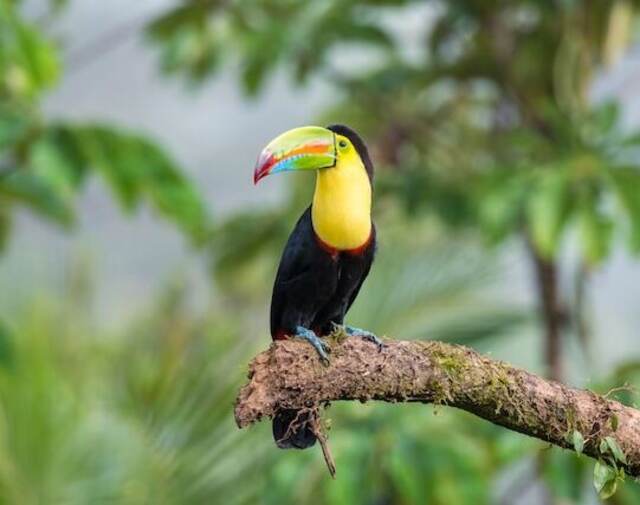
Factors Influencing Tropical Bird Diet
The dietary habits of tropical birds are influenced by a variety of factors. These range from the birds’ nutritional needs to the availability of food in their habitats. Understanding the factors that impact tropical bird diet is crucial for developing effective conservation strategies and for providing appropriate diets for captive birds.
Seasonal Variations
The availability of food can change seasonally in tropical regions, which impacts the diet of tropical birds. For example, during the rainy season, fruits may be more abundant, while in the dry season, birds may rely more on insects and nectar.
Availability of Food Sources
The availability of food sources also plays a significant role in shaping tropical bird diets. Birds may adapt their diets based on what is available in their immediate environment. In some cases, they may travel long distances in search of food sources.
Individual Preferences
Just like humans, individual birds may have their own dietary preferences. Some birds may prefer certain types of fruits or insects, while others may be more attracted to nectar or seeds. Understanding the preferences of individual birds can help to tailor diets and conservation efforts to specific populations.
Territoriality
Tropical birds are also influenced by territoriality when it comes to their diets. Certain species may fiercely defend their food sources, while others may feed in groups. The social and territorial behavior of each bird species can impact the way they interact with their food.
Captive Diets for Tropical Birds
Unlike their wild counterparts, tropical birds kept in captivity have limited access to a diverse range of food sources. Thus, it is important to ensure that their diets are nutritionally balanced and meet their daily needs.
Fruits and seeds should form the cornerstone of a captive tropical bird’s diet, as they are the birds’ primary food sources in the wild. Some recommended fruits include papaya, mango, and banana, while seeds such as sunflower and safflower can provide vital nutrients.
It is also important to consider incorporating commercial bird food into the diet, as these options are specifically formulated to meet the nutritional needs of tropical birds. Pelleted diets, in particular, are a convenient option as they provide a variety of nutrients in a single food source.
In addition to these primary food sources, it is important to include other foods to vary the bird’s diet and ensure that they receive a range of nutrients. Vegetables such as carrots and broccoli are good options, as are proteins such as cooked chicken or scrambled eggs.
When feeding tropical birds in captivity, it is important to avoid feeding them certain foods, as they can be toxic to birds. Examples include chocolate, caffeine, and avocado. Additionally, food should be changed daily to prevent spoilage and the spread of illnesses.
Unique Dietary Adaptations of Certain Tropical Bird Species
Tropical birds are known for their diverse diets, and many species have developed unique feeding habits to survive in their natural habitats. Here are some examples:
The Toucan
Toucans are famous for their large, colorful bills, which they use to access fruit that is out of reach for other birds. While they primarily eat fruit, they have also been known to consume insects, small lizards, and even other bird’s eggs.
| Food | Percentage of Diet |
|---|---|
| Fruit | 60-70% |
| Insects and other invertebrates | 30-40% |
The Hoatzin
The hoatzin, also known as the “stinkbird,” has a unique digestive system that allows it to break down tough leaves that other birds can’t digest. They have a four-chambered stomach similar to that of a cow, which ferments the leaves and gives off a strong odor due to the presence of methane gas.
The Oilbird
The oilbird is the only nocturnal fruit-eating bird in the world, and has adapted to navigate through dark caves using echolocation. They have a large olfactory bulb in their brain, which helps them locate ripe fruit in the dark.
| Food | Percentage of Diet |
|---|---|
| Fruit | 80-90% |
| Insects and other invertebrates | 10-20% |
These are just a few examples of the amazing adaptations that tropical birds have developed to survive in their unique environments. By understanding their diets and feeding habits, we can better appreciate these fascinating birds and work to protect their habitats for future generations.
Conservation Importance of Understanding Tropical Bird Diets
Tropical birds play an essential role in various ecosystems worldwide, contributing to pollination, seed dispersal, and insect control. Their diverse diets are crucial for their survival, and understanding what they eat is essential for their conservation. By preserving their natural habitats, we can ensure that these birds have access to the food sources they require to thrive.
For example, some tropical birds rely heavily on certain types of fruits, such as figs and palm fruits, which are only available in specific habitats. If these habitats are destroyed or fragmented, the birds may struggle to find the food they need to survive. Additionally, deforestation and other human activities can limit the availability of insects and invertebrates, which are critical protein sources for many tropical bird species.
By understanding the nutritional needs and feeding habits of tropical birds, conservationists can work towards preserving their habitats and ensuring that they have access to the food sources they require. This knowledge can inform habitat restoration efforts and the development of sustainable agricultural practices, which can benefit both tropical birds and local communities.
Overall, studying the diets of tropical birds is crucial for their conservation, as it allows us to better understand their role in various ecosystems and the threats they face. By taking steps to protect their natural habitats and ensure that they have access to the food they need, we can help to preserve these beautiful and diverse bird species for future generations.
Conclusion
Overall, the diets of tropical birds are incredibly diverse, with different species relying on a variety of food sources to meet their nutritional needs. Fruits, seeds, insects, and nectar all play crucial roles in the diets of many tropical birds, with some species exhibiting specialized feeding habits.
Understanding the dietary requirements of tropical birds is essential for their conservation, as habitat loss and changes in food availability can have significant impacts on populations. Efforts to preserve natural habitats and promote sustainable practices are critical for ensuring that these birds continue to thrive.
For those who keep tropical birds in captivity, it is important to provide a nutritionally balanced diet that incorporates a range of fruits, seeds, and commercial bird food options.
However, it is also important to recognize that the diets of captive birds may differ from those of birds in the wild, and adjustments may need to be made to ensure optimal health and well-being.
In conclusion, the diverse diets of tropical birds are a fascinating aspect of their biology, and understanding them is crucial for both their survival and the enjoyment of bird enthusiasts around the world.

FAQs: What Do Tropical Birds Eat?
What do tropical birds eat?
Tropical birds have diverse diets that vary depending on their species and habitat. They primarily consume fruits, nuts, seeds, insects, nectar, and pollen.
What types of food do tropical birds rely on in their natural habitats?
Tropical birds rely on a variety of food sources in their natural habitats. These include fruits, nuts, seeds, insects, and nectar.
Why are fruits important in the diet of tropical birds?
Fruits play a vital role in the diet of tropical birds as they provide essential nutrients and energy. Tropical birds obtain fruits by foraging or feeding on trees and plants.
How do tropical birds consume seeds and nuts?
Tropical birds consume seeds and nuts by cracking open their hard shells with their beaks. They often forage for seeds on the ground or extract them from fruits.
What is the role of insects and invertebrates in the tropical bird diet?
Insects and invertebrates are an important protein source for tropical birds. They employ various hunting techniques, such as catching insects mid-air or searching for them in tree bark.
Why do tropical birds consume nectar and pollen?
Tropical birds are attracted to flowers because they consume the nectar and pollen. Nectar provides them with a high sugar content, while pollen contributes to their nutritional needs.
How do tropical birds locate their food sources?
Tropical birds have adapted foraging habits that help them locate their food sources. They use visual cues, memory, and territoriality to find fruits, seeds, insects, and other food items.
What factors influence the diet of tropical birds?
The diet of tropical birds is influenced by factors such as the availability of food, seasonal variations, and individual preferences.
What should the diet be for tropical birds kept in captivity?
Tropical birds kept in captivity should have a diet that includes recommended fruits, seeds, and commercial bird food options. It is important to provide a balanced and nutritious diet that mimics their natural food sources.
Can you provide examples of tropical bird species with unique dietary adaptations?
Some examples of tropical bird species with unique dietary adaptations are toucans with their specialized beaks for fruit consumption and hummingbirds with their long beaks for nectar feeding.
Why is understanding tropical bird diets important for conservation efforts?
Understanding tropical bird diets is crucial for conservation efforts as it helps in preserving their natural habitats and ensuring the availability of adequate food sources for their survival.

